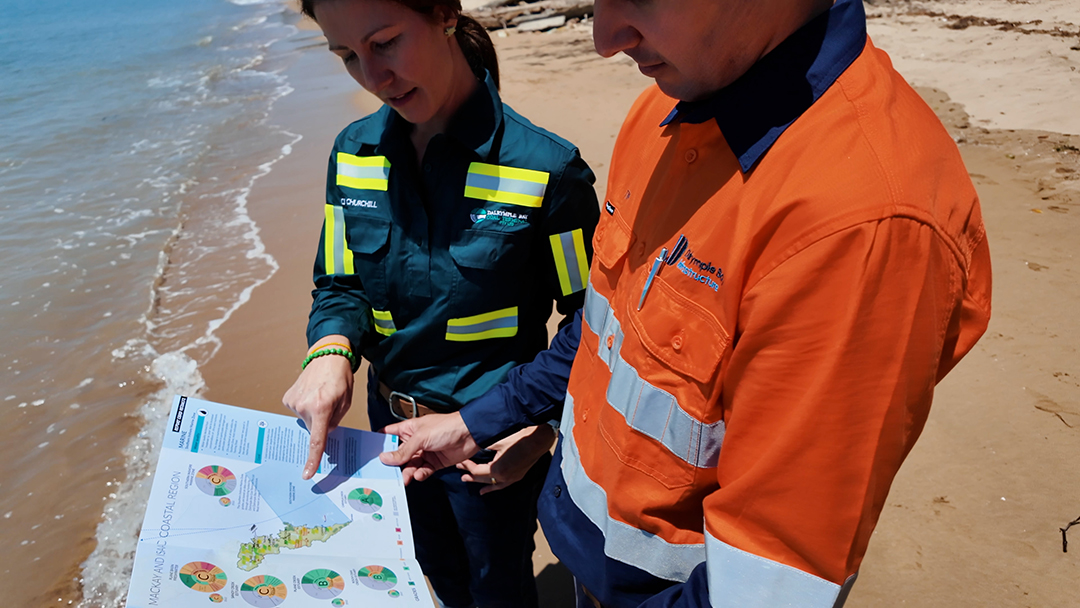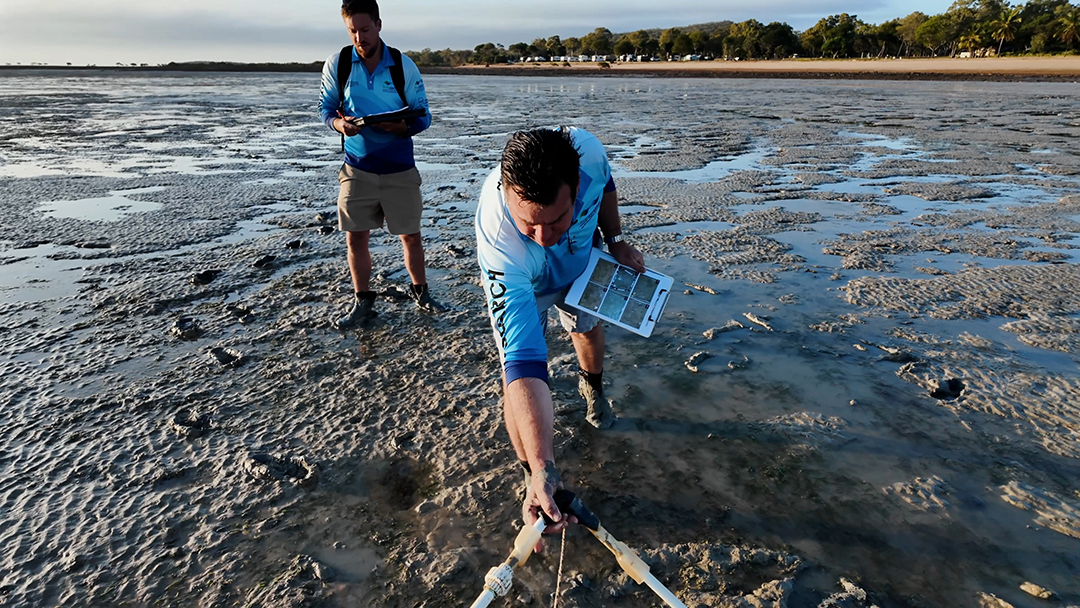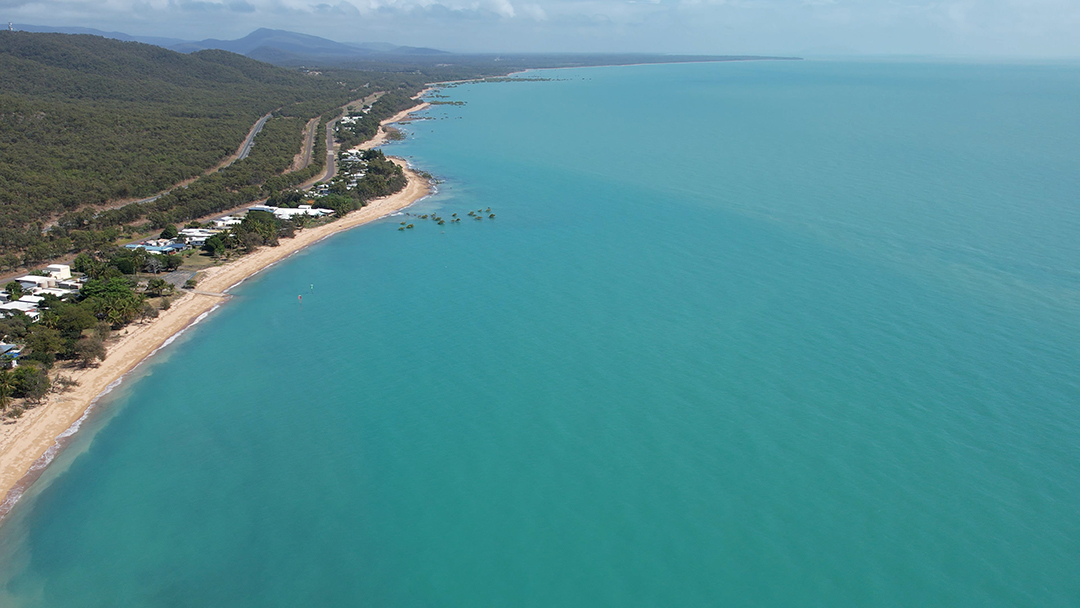Southern Seagrass Condition Best on Record

Seagrass is thriving off the Isaac region’s coastline according to the latest monitoring data collected by the Healthy Rivers to Reef Partnership.
With continued investment from Dalrymple Bay Coal Terminal Pty Ltd and Dalrymple Bay Infrastructure, researchers have been able to track seagrass condition off Clairview’s coastline for the past seven years as part of the Southern Inshore Monitoring Program.
Principal Research Scientist at JCU TropWATER, Professor Michael Rasheed has led the collection of seagrass data since monitoring began in 2017.
Using a low-flying helicopter, Professor Rasheed and his team survey at least 145 intertidal sites across three meadows – two along the shoreline, and one at Flock Pigeon Island.

“In the latest data, we are seeing some really positive signs with the two mainland meadows recording their highest ever results for area and biomass indicators,” Professor Rasheed said.
“The southern mainland meadow in particular has shown a continuous expansion in spatial area year-on-year since 2017, which is great to see.”
After seven years of the annual monitoring program, seagrasses in the Southern Inshore Zone are in some of the best condition to date, indicating a healthy marine environment, with water quality and environmental conditions favourable for seagrass growth.
~ Professor Michael Rasheed, JCU TropWATER



DBCT P/L Manager of Safety, Risk and Environment Ricci Churchill has experienced the seagrass field work first-hand.
“I was so grateful to join the JCU TropWater scientists as they completed their seagrass surveys a few years ago, and to experience it knowing that the research is possible thanks to funding from DBCT P/L and DBI,” Ms Churchill said.
“At DBCT P/L, we are very proud of our investment into the Southern Inshore Monitoring Program, because prior to 2017 there was no data available for seagrass, coral or water quality in this reporting region.
“Now, after almost a decade of monitoring, we have a strong dataset that continues to grow, and the ability to provide meaningful information to the community about the health of the local marine environment.”
Most recently, DBCT P/L and DBI committed $415,000 to fund the Southern Inshore Monitoring Program for an additional three years, ensuring the collection of data on coral, seagrass and water quality through to June 2026.
DBI Site Manager Tim Ffrost said supporting the monitoring program was a natural fit for DBI.
“Our operator, Daly Bay first introduced the Southern Inshore Monitoring Program to us in 2019, and straight away we saw it was a natural fit, and we were really excited to be involved,” Mr Ffrost said
“The marine environment is critically important and being able to contribute to ongoing monitoring and data collection of this ecosystem ties back to one of our key objectives of understanding and protecting the condition of our local environment.
“We also see a lot of value in local partnerships because by collaborating and pooling resources like we’ve done with this program, you can achieve greater outcomes for both the environment and the community.”
The latest seagrass grades will be published in the Healthy Rivers to Reef Waterway Health Report Card, due for release in July 2025.

Key points
- The Southern Inshore Monitoring Program collects data on coral, seagrass and water quality for inshore waters off the coast of Clairview.
- The program was established to fill a key data gap in the Southern Inshore Marine Zone, along the Isaac region’s coastline.
- The data is presented in our annual Waterway Health Report Card.
- The Southern Inshore Monitoring Program is funded by Dalrymple Bay Coal Terminal Pty Ltd and Dalrymple Bay Infrastructure.
- The latest seagrass data for the program is based on surveys conducted in October 2023, and grades are due to be released in July 2025.
- 145 intertidal sites are surveyed across two mainland meadows, and one at Flock Pigeon Island.
- The two mainland seagrass meadows recorded their highest ever results for area and biomass indicators.
- The southern inshore meadow has shown a continuous expansion year-on-year since 2017.
- Flock Pigeon Island seagrass meadow continues to show signs of recovery from substantive declines in biomass and area in 2020. In the 2023 survey, abundant dugong feeding trails were recorded in this meadow for the first time since 2018.


